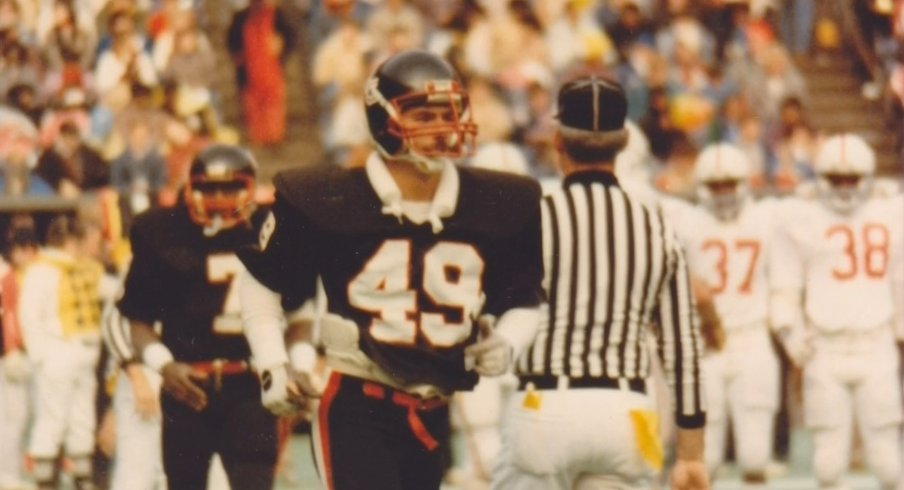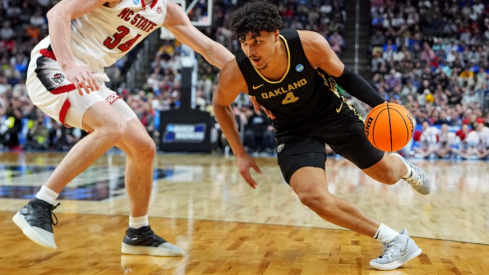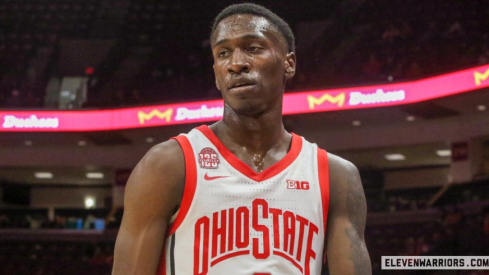Whether it’s intentional or by accident, Urban Meyer is succinct when reminiscing about his yesteryears in the Queen City, his days as a college kid at Cincinnati and his time as a backup defensive back for the Bearcats.
After all, how do you answer something like “can you talk about your experience playing there?” when the answer to such a question is predicated upon the notion of having an actual experience at said place.
“Not a lot of (an) experience,” Meyer, a 1986 alumnus, said. “I played professional baseball out of high school and did that for a couple of years and made a decision to play football. Cincinnati — I probably wasn't a good enough player to go there — but I did play a little bit, and went right into coaching right afterwards.”
Meyer’s humdrum account makes it all seem like a blip on the radar of a life that’s had more memorable stops.
“It wasn't a great experience. We weren't very good — but I still have great friends and good memories from my time there,” Meyer said with a half-smile considering one of his sisters, Gigi Meyer Escoe, is the university’s Vice Provost for Undergraduate Affairs and another was crowned homecoming queen.
“Just strong history at UC,” he said.
But Meyer — a man who often speaks in hyperboles and who can endlessly gush over the things he fancies — didn’t exactly offer a ringing endorsement of his alma mater Monday while previewing a looming matchup between the Bearcats and his Ohio State Buckeyes.
It might because the Cincinnati of today — a public research university of more than 40,000 students that continues to climb in college rankings — is considerably different than the school Meyer attended back in the mid-1980s.
“Cincinnati has had a similar transformation of the academic reputation Ohio State went through. When I was there, there was something called "U College" and it was a big state school, and my sister lets me know all that time it's not that way anymore,” he said.
“It's a high‑end institution, which has always had great reputation, but just administration like Ohio State now. That would be a great study — what's happened to the two largest in‑state schools, how they've grown as far as admission requirements. Very similar trajectory as far as (Ohio State’s) up to 29, 30 ACT (scores). I don't know what Cincinnati i, but I know they've done very well as well. So there is a strong tie, a lot of respect, and Cincinnati is a great town, great university."
And as the school’s grown, so has the football program. There seems to be a correlation.
“Oh my goodness,” Meyer said of the contrast between then and now.
“I was very aware of the transformation ... You saw a transformation of the program where they started investing into the facilities and the facility.
“When I played there, it wasn't very strong, and they made a decision — a commitment — obviously (it’s) had great rewards for them.”
Currently, Cincinnati’s Nippert Stadium — a quaint fixture nestled in the middle of campus — is undergoing an $86 million renovation to add more seats, a new press box and swanky suites. It seemed like long-overdue facelift, but success yields these kinds of additions. They don’t happen by accident.
Since 2006, the Bearcats are 74-31 and have created momentum in recruiting to sustain such success. Their last three coaches are at the helm of major programs: Mark Dantonio (Michigan State), Brian Kelly (Notre Dame), and Butch Jones (Tennessee). Current head coach, Tommy Tuberville, became a household name in nearly a decade at Auburn.
It’s clear, though, how the Bearcats have drawn talented football minds to campus and how they struggle to keep them near the banks of the Ohio River. It’s why Cincinnati is still regarded by some as a stepping stone program — a stop before coaching the Spartans, the Fighting Irish, the Volunteers.
And there seems to be some truth to that, too: this place isn’t a college football blue blood like Ohio State and it doesn't harbor the resources, alumni and fan base like the Buckeyes do.
But the Bearcats are relevant and on an upward trajectory. Which is why it’s curious Cincinnati — members of the recently-forged American Athletic Conference — weren’t invited to join a major league after the demise of the Big East.
Asked if he saw it as a Power Five caliber school, Meyer said “absolutely.”
“It's the marketplace, you're talking about TV sets. There is a nice tradition at Cincinnati, and the recent tradition has been real good, too … the coaching tree that has developed in the last 25 years has been pretty remarkable and the success they've had,” he said.
“I was surprised they weren't invited into a Power Five … I think we certainly respect them as if they are. We're watching film — they're as good as a lot of the other teams that we have gone up against.”
Back then, when Meyer was a member of the middling Bearcats, it's hard to imagine former head coach Earle Bruce uttering something like that.
So many things have changed since then — including Meyer, whose coaching pilgrimage neatly led him back to Ohio after spanning the country and winning two national titles at Florida.
And when Ohio State and Cincinnati convene on a warm September evening Saturday, the past will collide with the future.
Of course, Meyer, the baseball standout-turned backup football player whose memories of his college years aren't apparently anything to crow about, is a rock star now. Little of that has to do with playing for the Bearcats during a period of irrelevancy and mediocrity.
But Cincinnati — determined not to be overlooked by its bigger and storied counterpart to the north — has changed, too.


